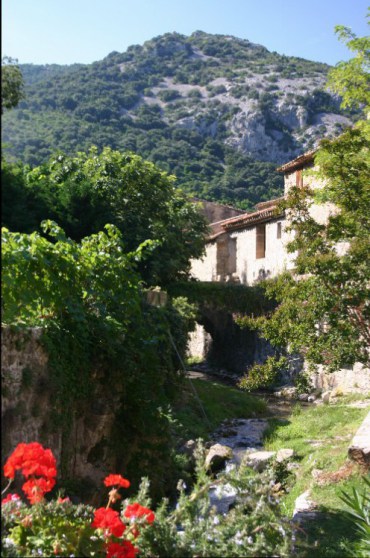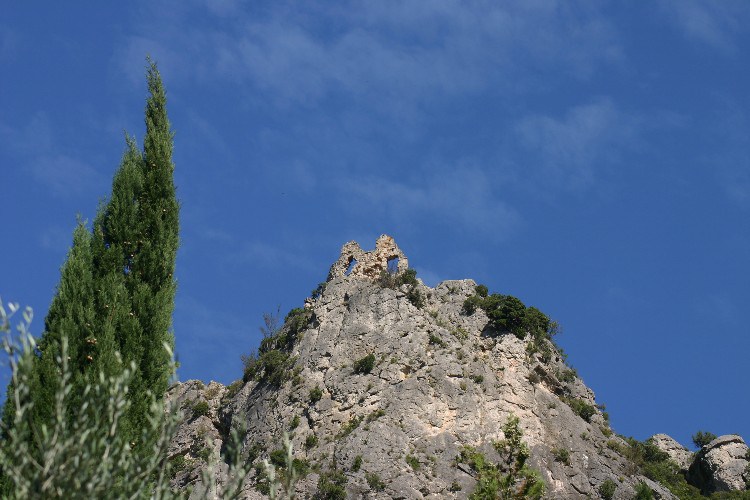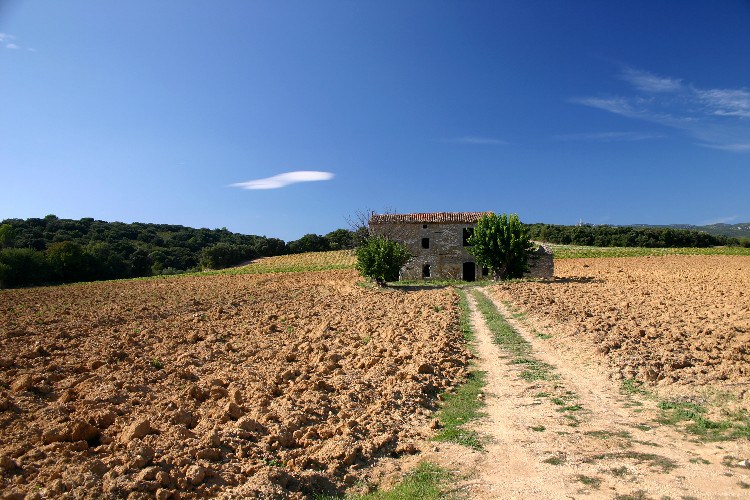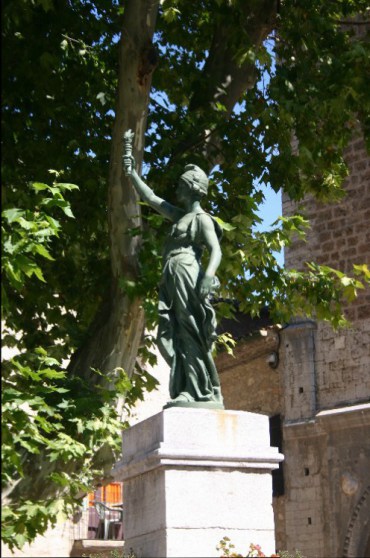A Letter from St. Fréchoux: A Drive to St. Guilhem-le-Desert
Dear Eric:
We hope this letter finds you well and happy and your Australian spring continues to be springy and say hi to Graham for us. We trust he is keeping out of trouble but we somehow doubt it!
It is a rather sleepless night for both us last night and I finally fell asleep long after the very early grape pickers have set out for the day. We sleep till 9:30 and are greeted by a clear blue sky and glorious sunshine. Our plans today are to drive to Lodève and Lac Salagou which are really only a stone’s throw away from our little chateau.
A Monday Drive to St. Guilhem-le-Desert
Mondays are not the day to do things in France and especially the south of France: everything is shut tighter than a drum! Lodève is very quiet and we vow to come back later in the week. We buy some stamps (for John’s mom, who collects them and for this letter), a Herald Tribune, and drive to Lac Salagou for a quick look. It was so windy we didn’t get out of the car. This too will have to wait. We head back to the chateau and make some lunch and decide to drive to St. Guilhem-le-Desert and are rewarded for the quiet Monday visitation. The sun is starting to fall to the west and over the mountains when we arrive after 2 p.m. The village is situated in the natural gorge of the high, rocky mountains, with tall, sheer cliffs surrounding it on either side. We drive up through town, park, and from this vantage point we see further up the Gellone valley and the via Tolosana, part of the famous and arduous pilgrimage to the shrine of Santiago de Compostella (or St. Jacques, as the signs here say) on the Atlantic coast of Spain, that winds it way through this area, heading to Toulouse on the way to Compostella. We find that the town is yet another Unesco World Heritage site, and enjoy the advantages this brings, particularly evident by its neat and tidy streets and organized tourist information. We lock our car and stroll a very short distance into the main town square with a statue of Liberty and her flame gracing the small public fountain. The shops and cafés are doing a small but consistent business from the insignificant number of tourists here. Ahhh, the end of September in the south of France: glorious weather and not too many tourists.
Our strolling takes us down the main street and past small, upscale shops and galleries; all the restaurants, whether they are one star or four are all shut for Monday. We have saved our visit to the monastery for our return jaunt up the hill and we enter the gothic building late in the afternoon.
A Knightly History
St. Guilhem had a knightly history, being one of Emperor Charlemagne’s hand-picked band of champions and, like his grandfather, fought bravely against the Saracens of Spain. Folklore has it that under the name “Guilhaume d’Orange” he became famous for his knightly prowess and chivalry and was immortalized in medieval ballads and verse commonly known as “chansons de geste”. St. Guilhem was a faithful and devout Christian and had resolved to end his days at the Monastery at Gellone. He richly endowed the abbey with many of his own possessions and was also in possession of a portion of the True Cross which was given to him by Charlemagne. He became a monk in 806 and died, revered as a saint, in 812. The abbey became a pilgrimage site and the monastery prospered and was rebuilt largely on the wealth and generosity of the splendid offerings made by the devout pilgrims who later came to see the remains of St. Guilhem and the relics of the True Cross. He gave his name to the abbey and to the small village that grew under his protection. The church is true Gothic. Simple and austere. Some slim bands of sunlight from the small windows high above pierce the cool, musty darkness. We wander out to the cloisters which were destroyed by vandals and thieves at the beginning of the 19th century. What remained was removed and later reassembled in New York at the renowned Cloisters Museum. It isn’t difficult to see how this sunny courtyard, with its carp filled reflecting pool was a place of peace, solitude and respite.
The sun has just passed over the mountains and we make our way home, stopping for a late afternoon picture of an abandoned farmhouse, nestled unkempt and unloved on the edge of a bustling vine-yard.
True Love in the south of France!







Comments